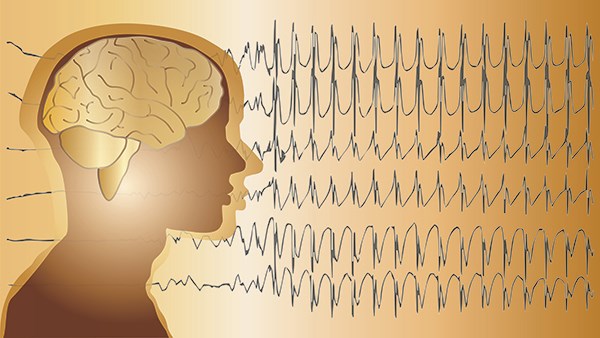Article
Kapur J, Elm J, Chamberlain JM, et al. Randomized Trial of Three Anticonvulsant Medications for Status Epilepticus. N Engl J Med. 2019;381(22):2103-2113.
OBJECTIVE
To directly compare the safety and effectiveness of levetiracetam, fosphenytoin, and valproate for the treatment of status epilepticus.
BACKGROUND
Ample evidence exists to support the use of benzodiazepines as the first-line agent in status epilepticus; however, the data is lacking on what to definitively reach for as a second-line agent for status that is not responding to benzodiazepines. Enter the ESETT trial, which created the first RCT directly comparing the 3 most frequently used second-line agents for status.
POPULATION
Children and adults (>2 yo) who had seized for >5 minutes and already received benzodiazepines (diazepam, lorazepam, or midazolam) 5-30 minutes prior yet continued to seize.
Patients were excluded if the seizure was due to a secondary cause: trauma, hypo/hyperglycemia, cardiac arrest or post anoxia; known contraindications to trial medications; or already received trial medications for status, pregnant, or incarcerated.
DESIGN
- Multicenter (57 U.S. hospitals), blinded, randomized control trial of 384 patients aged 2 years old or older
INTERVENTION
Patients were randomly assigned to levetiracetam, fosphenytoin, or valproate. The dosing - all infused over 10 minutes - was as follows:
- Levetiracetam: 60 mk/kg
- Fosphenytoin: 20 mgPE/kg
- Valproate: 40 mg/kg
OUTCOMES MEASURED
Primary
-
Absence of seizures and improving responsiveness 60 minutes after medication
Secondary
- Time to termination of seizure
- Admission to ICU
- ICU and hospital length of stays
Safety Outcomes
-
Life-threatening hypotension, cardiac arrhythmia, death, endotracheal intubation, acute seizure recurrence, anaphylaxis all within 60 minutes after drug infusion
KEY RESULTS
There was no significant difference between any of the antiepileptic medications. In fact, the trial was terminated early after a planned analysis part way through the study course showed no difference between the 3 drug choices. Similarly, there was no significant difference in secondary outcomes between levetiracetam, fosphenytoin, or valproate.
Regarding the safety outcomes, the study was not sufficiently powered to detect any significant differences between the 3 antiepileptics.
EM TAKE-AWAYS
This trial speaks for itself. While the results show no significant difference in effectiveness or safety between these 3 medications, there are different aspects that can be gleaned from the results.
For one, our ability to achieve an absence of seizures once status is reached is quite low with benzos and second-line drugs. Less than half of the patients in this trial (45-47% depending on study drug) achieved termination of seizure activity by 60 minutes. This author has not witnessed enough patients in status to comment on anecdotal evidence, but this number seemed staggering. With less than a 50% success rate in terminating seizures, a major take-away is the necessity for preparation for intubation and sedation for patients in status who are needing second-line agents, as half the time these will not work.
Secondly, the secondary and safety outcomes between the drugs were quite interesting. The trial was not powered to detect these differences, and as such there was no statistical significance; however, a trend seemed to emerge. Fosphenytoin, a medication with known adverse effects of hypotension and arrhythmias, led to the highest percentage of endotracheal intubations, acute respiratory depression, and hypotension compared to levetiracetam and valproate.
Thirdly, the dose of levetiracetam was quite high. Conventionally, the loading dose of levetiracetam is 1-2 g. This study used 60 mg/kg, which for an average 70 kg adult is 4,200 mg - nearly double the standard used in most emergency departments and may become more of the standard dosing moving forward.




